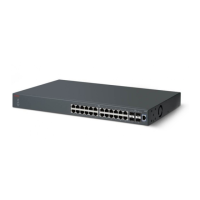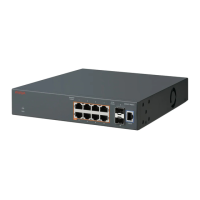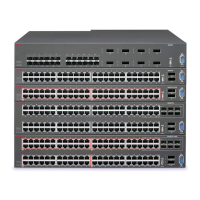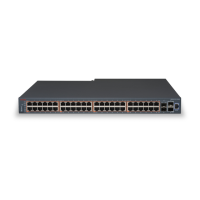Example
Verify the operational status of the stack.
Switch#show stack auto-unit-replacement mac-addresses
UNIT # PHYSICAL ADDRESS OPERATIONAL
Unit 1 00-1C-9C-4A-78-00 YES
Unit 2 00-1A-8F-E7-38-00 YES
Unit 3 00-1C-9C-BB-74-00 YES
You cannot remove the MAC address of an operational unit. Prepare the unit for replacement,
remove the unit from the stack, and verify the operational status.
Switch#show stack auto-unit-replacement mac-addresses
UNIT # PHYSICAL ADDRESS OPERATIONAL
Unit 1 00-1C-9C-4A-78-00 YES
Unit 2 00-1A-8F-E7-38-00 YES
Unit 3 00-1C-9C-BB-74-00 NO
Remove the MAC address for the non-operational unit.
Switch#stack auto-unit-replacement remove-mac-address unit 3
Verify that the MAC address is deleted for the non-operational unit.
Switch#show stack auto-unit-replacement mac-addresses
UNIT # PHYSICAL ADDRESS OPERATIONAL
Unit 1 00-1C-9C-4A-78-00 YES
Unit 2 00-1A-8F-E7-38-00 YES
Unit 3 00-00-00-00-00-00 NO
Add a new unit with a matching hardware configuration to the stack. Regardless of the new unit
MAC address, the AUR configuration copies to the new unit and the new unit reboots. Once booted,
the new unit joins the stack.
Displaying stack information
Use this procedure to display the current stack information. In addition, it will cause the front face
LEDs to light up to display the unit ID. For example, unit 4 will light LEDs 1 through 4.
Procedure
1. Enter Privileged EXEC mode:
enable
2. At the command prompt, enter the following command:
Configuring the switch using ACLI
82 Getting Started with Avaya ERS 3500 Series July 2015
Comments on this document? infodev@avaya.com

